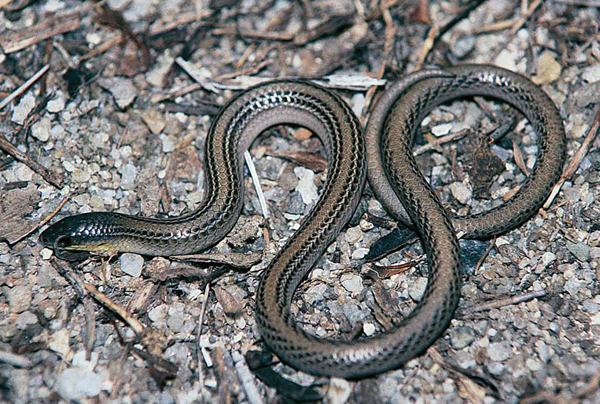Urban sprawl across Melbourne’s west is endangering the habitats of the threatened striped legless lizard, wildlife groups say.
In a joint statement to state and federal governments, wildlife groups across the west warned about potential impacts of housing developments in areas inhabited by the lizard.
Recent research by the state Department of Environment, Land, Water and Planning found habitats for the striped legless lizard were far fewer than thought, but a number of “hotspots” for the animal existed along Kororoit Creek.
Wildlife groups including Melton Environment Group, Friends of Kororoit Creek and the Western Melbourne Catchments Network, are worried about residential encroachment and planning approvals along these hotspots.

INFORMATION: Striped legless lizard
“Unfortunately, the hotspots currently face strong in-fill urban development, with a number of housing developments planned by developers,” the joint statement points out.
“Recent approval of The Point at Burnside, comprising 80 hectares of striped legless lizard habitat, sets a precedent and seals the fate of a very large population of lizards.
“That approval will also result in the fragmentation of populations along Kororoit Creek. Further approvals along Kororoit and Jones creeks would seal the fate of hundreds more lizards.”
The groups have called on the state and federal governments to ensure the lizards’ habitat is protected.
They are also calling for research funds to identify additional “hotspot” areas, management of reserves known to have high populations of the striped legless lizard, and for funds generated from growth-area developments to be put back into conservation measures for the lizard’s survival.
“Whether in captivity or in the rapidly diminishing grasslands of Melbourne, what this species needs is more certainty,” the letter states.
A government report found the striped legless lizard was once widely distributed across Victoria and was probably quite common across the state’s volcanic plains prior to European settlement.
“Subsequent loss and modification of native grassland areas through agricultural practices and urban development have substantially reduced the available habitat across the former range of this species,” the report states.
It also found a combination of factors, including clearing of grasslands for urban development, some farming practices, weed invasion and “inappropriate fire regimes”, threatened its long-term survival.








